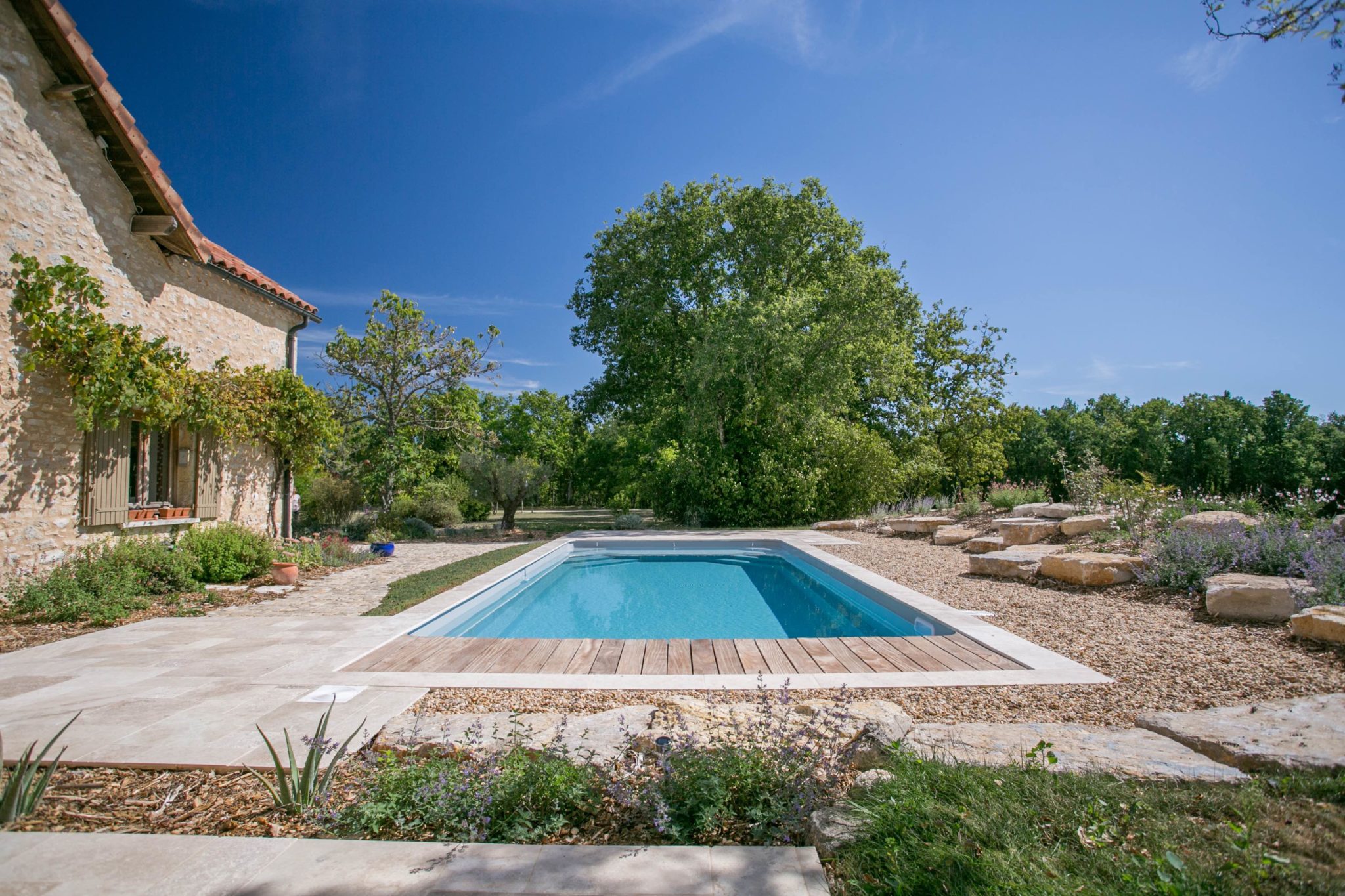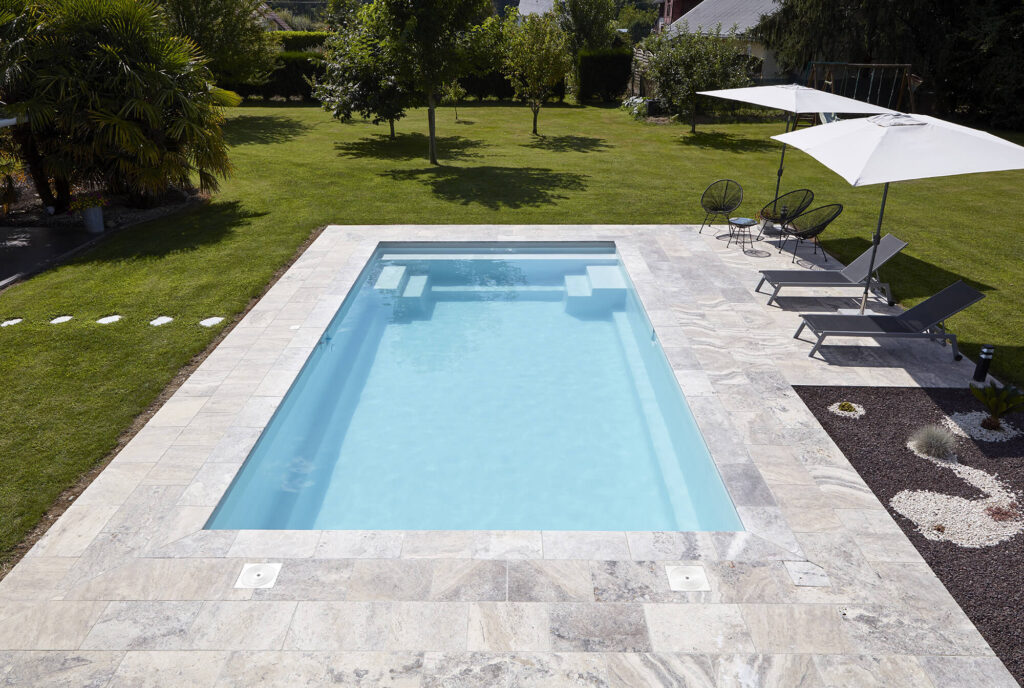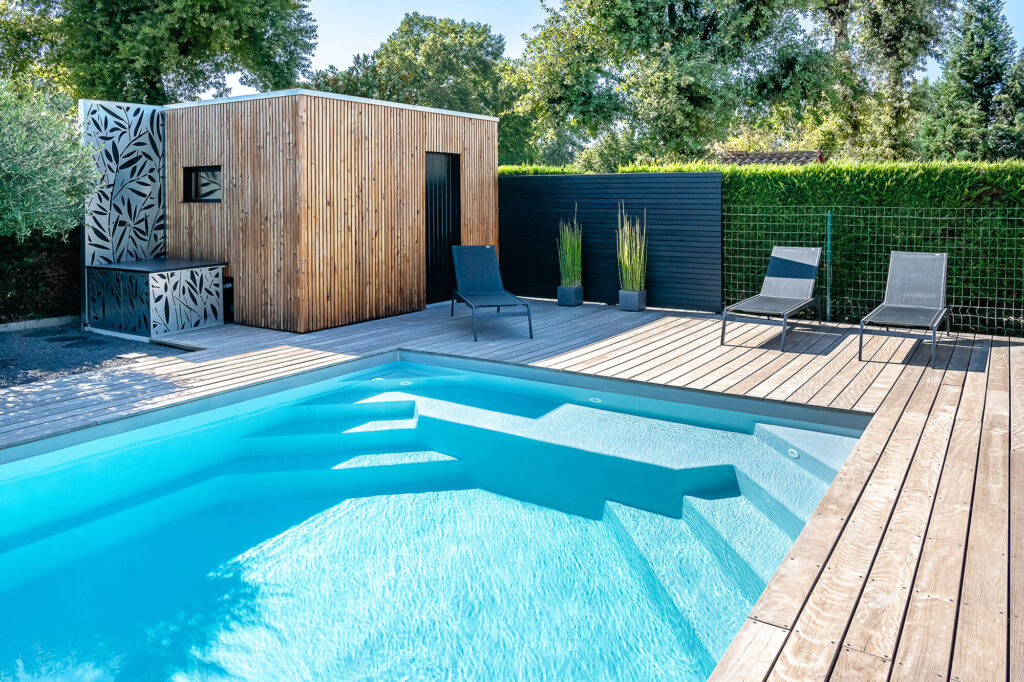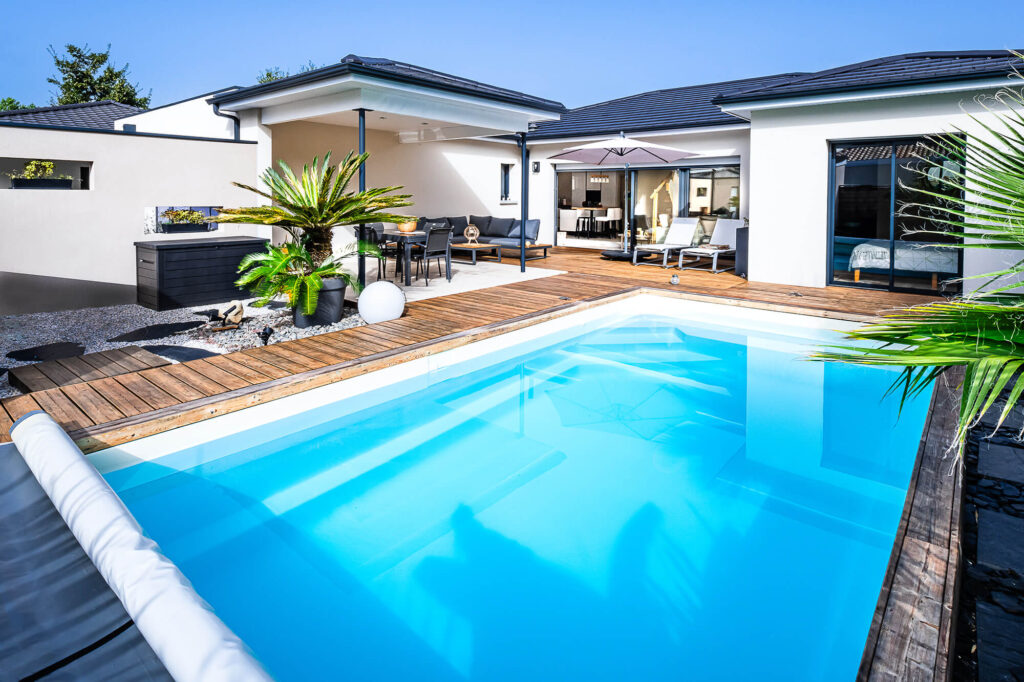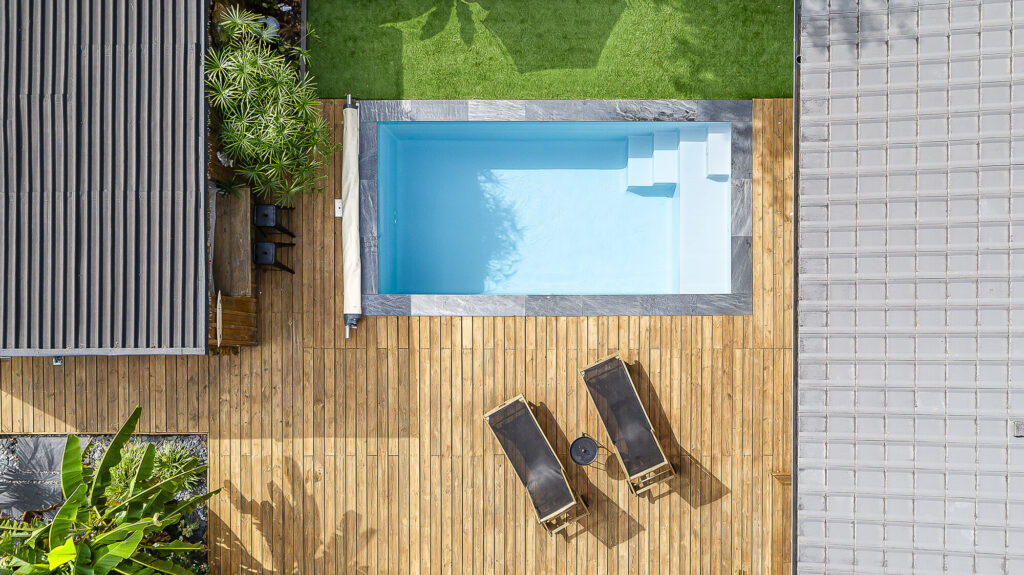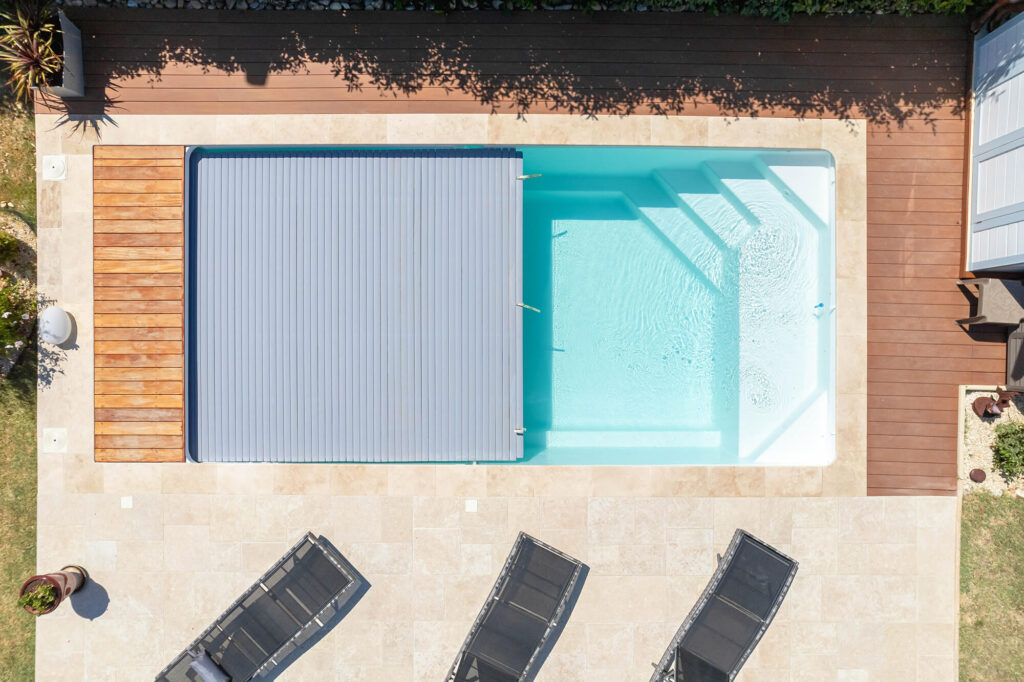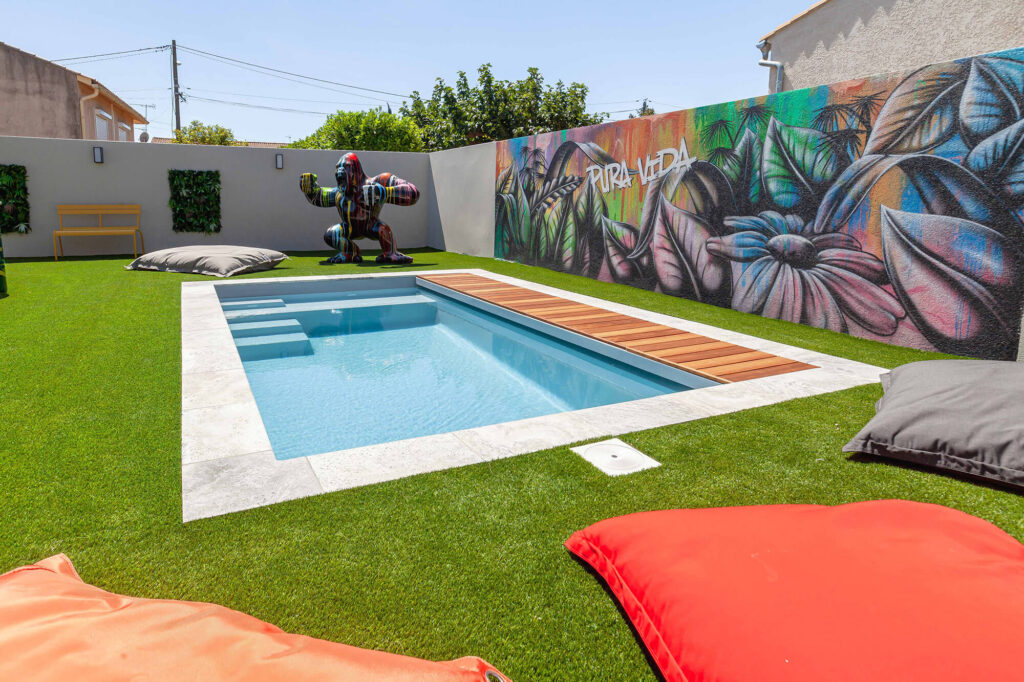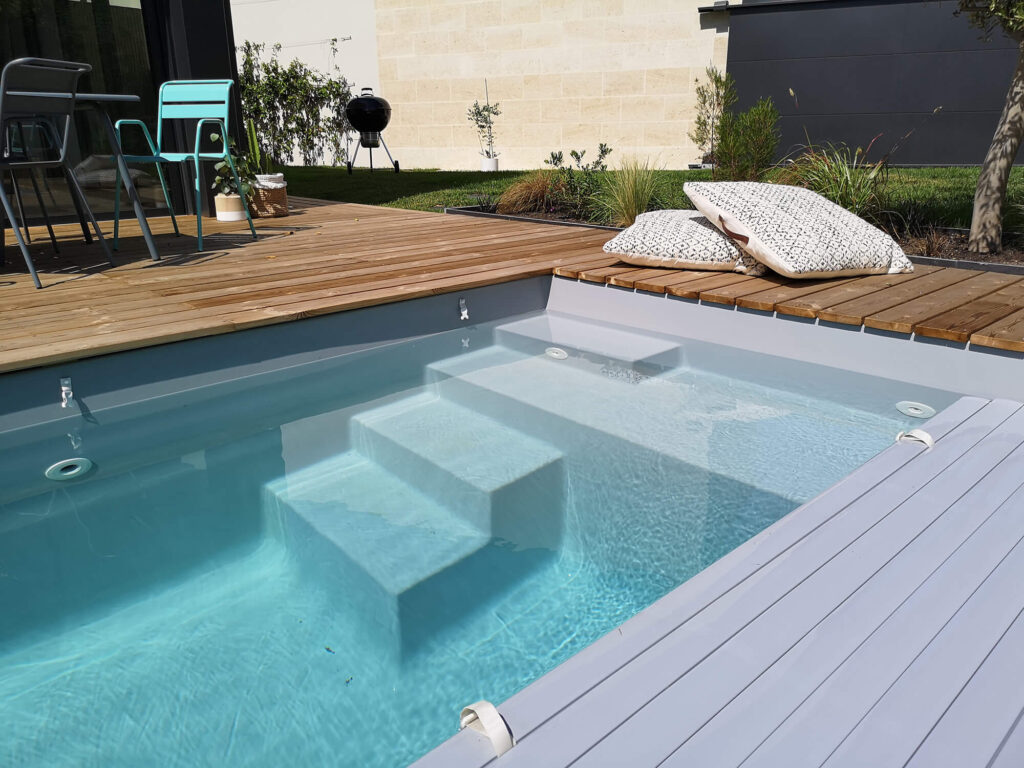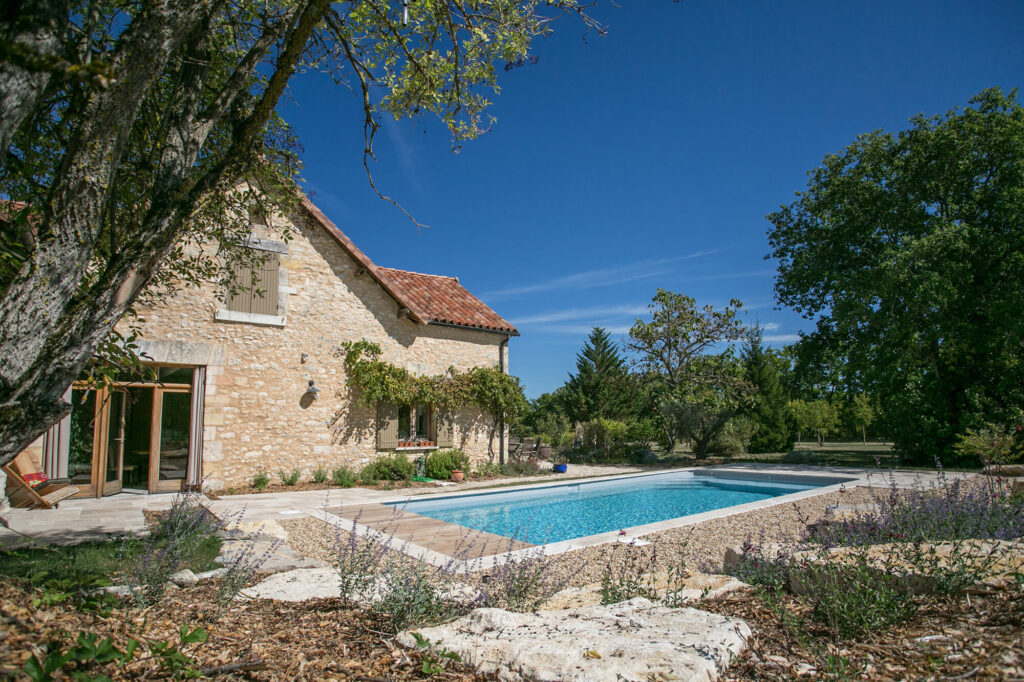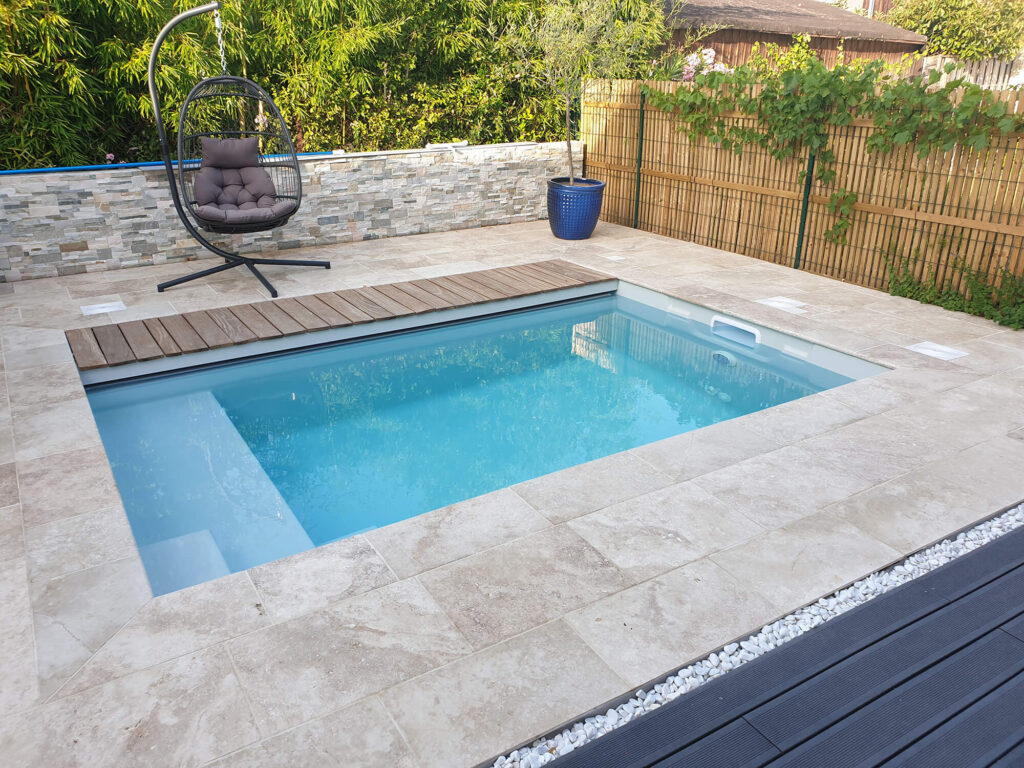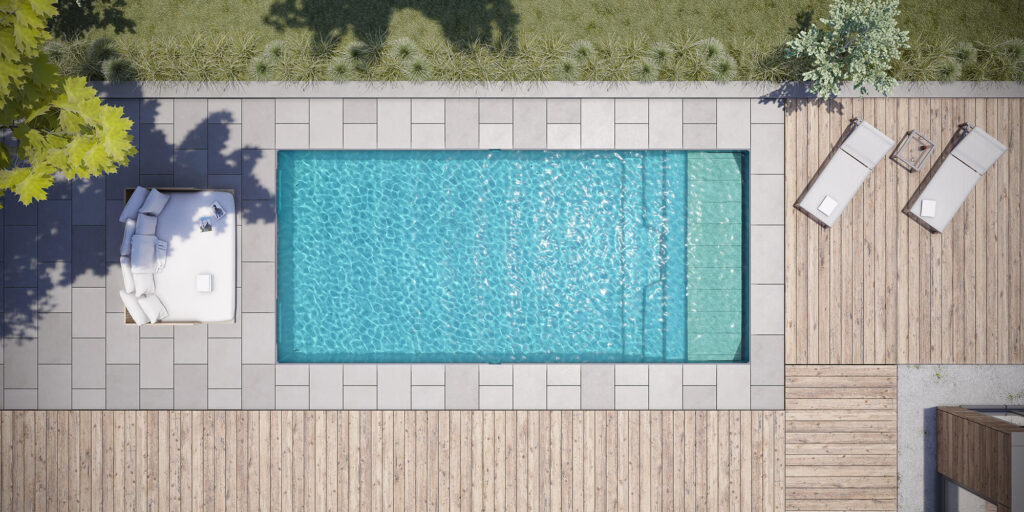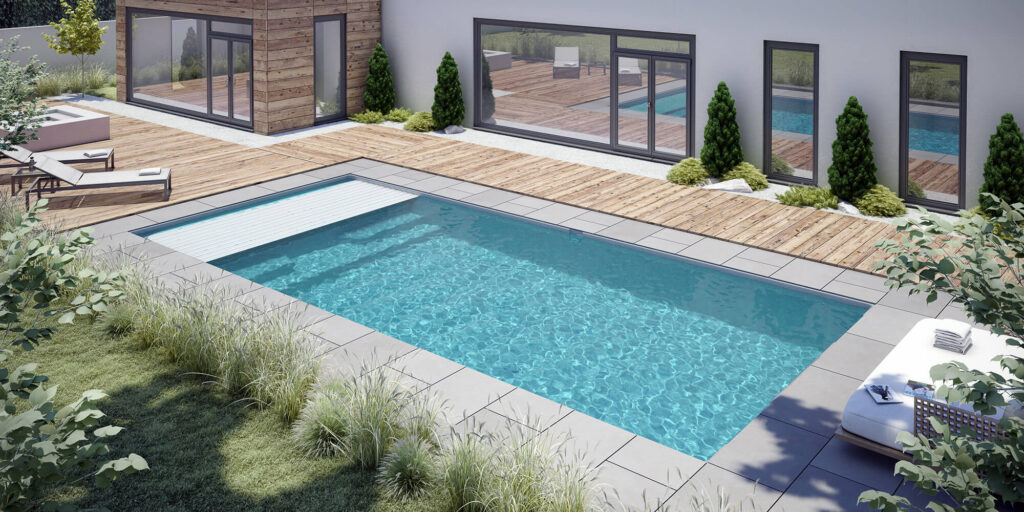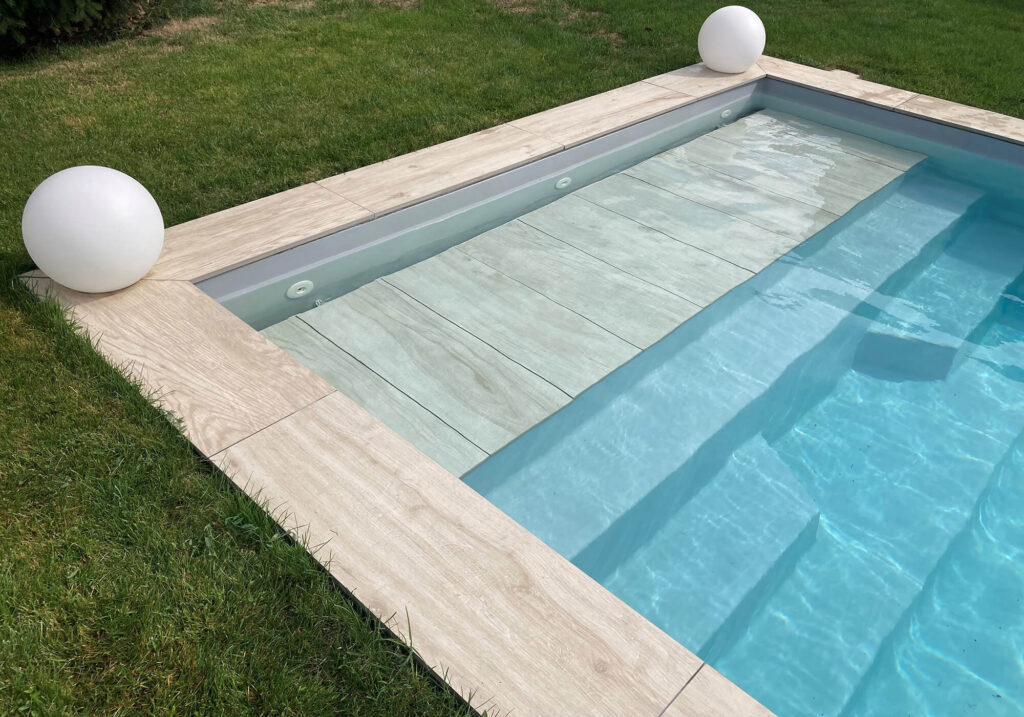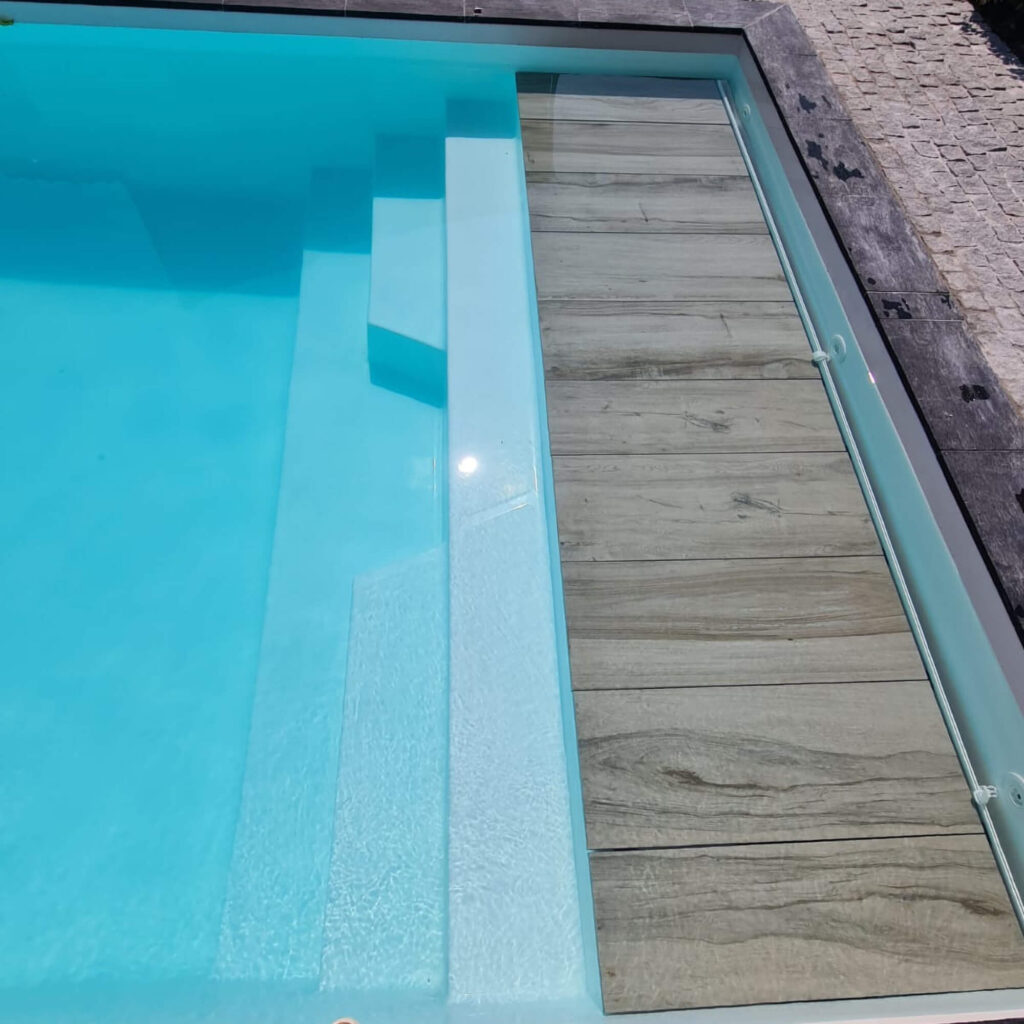Having a private swimming pool built in your home is a valuable investment that can increase its value and property appeal. And for good reason, in the summer, it offers a peaceful place to relax and cool off.
However, before you start your project, it is important to find out about the feasibility of the work, in other words, compliance with local regulations and construction requirements. Indeed, depending on the type of pool (semi-buried or above ground for example) that you choose, the rules differ.
Find out without further delay what you need to know before embarking on your swimming pool project !
Swimming pool regulations: what are the conditions for installing a swimming pool on your land?
When considering the construction of an in-ground swimming pool , we are frequently confronted with various constraints, mainly related to the land. This is a key element of the project and its analysis is essential.
The importance of the typology of your land
The feasibility of your swimming pool project is influenced by various factors, including the nature of your garden :
– Soil composition: The nature of the soil, whether clayey, sandy or rocky, influences the feasibility and cost of construction.
– Proximity of underground networks: Identifying the location of water, electricity and gas networks is crucial to avoid any risk during work.
– Exposure to wind and sun: Good sunshine and protection from the wind are essential to fully enjoy your pool.
– Sloping terrain: Sloping terrain can complicate construction, but there are solutions to adapt it to your project.
– Site accessibility: It is important to ensure that construction machinery can easily access your land to facilitate work.
Although a soil study is not mandatory for your project, it can allow you to quickly know if your land is suitable for a swimming pool or not . In addition, if your garden falls within the framework of regulations, you will have to redefine the location or even cancel your swimming pool project.
Urban planning rules to know before undertaking any swimming pool project
The Local Urban Planning Plan (PLU) is an urban planning document which authorizes the implementation of your swimming pool project provided that you comply with the specific regulations set out.
Issued by your municipality, the PLU includes two essential elements: the graphic map of the constructible or non-constructible zones, as well as the building rights associated with it (type of construction, dimensions, etc.).
Before building a shell pool in a habitable area, you will need to ensure that you comply with the following regulations:
– Distance to neighbouring properties, drilling systems and rainwater harvesting facilities;
– The maximum height authorized for the construction of your swimming pool;
– Green spaces and soil waterproofing: Some municipalities require the conservation of a certain percentage of green spaces, and limit soil waterproofing.
Urban planning regulations are decisive and vary depending on the location of your land. Contact your urban planning department and consult the Local Urban Planning Plan (PLU) and the urban planning code of your municipality to find out the applicable regulations.
Building a swimming pool on non-constructible land: what you need to know
In non-buildable areas, only temporary constructions are allowed. For a maximum period of 3 months, you can install an above-ground pool , after which it must be dismantled.
However, there are several options for having an in-ground swimming pool at home:
– Request a modification or revision of the PLU at the town hall. You will have to demonstrate that your project does not negatively affect the environment or the development projects of the municipality.
– Provide solid plans and specifications to prove that the pool is an extension of your home .
– Obtain an exemption from the town hall by demonstrating that your project complies with the current Urban Planning Code. Your request will be examined by the town planning department of the municipality.
What permits are required to install my swimming pool?
As you will have understood, the installation of a shell pool depends both on your garden and on the town planning regulations of your municipality. But also know that the authorizations vary depending on the dimensions of your future pool.
Swimming pools less than 10m2
If you wish to install a swimming pool of less than 10m2 , a prior administrative procedure may be necessary depending on the location of your land.
This procedure involves a prior declaration of works to be submitted to the town hall. It is only mandatory if your land is located in regulated areas such as:
– The perimeter of a heritage site;
– The surroundings of a historic monument;
– A protected area in a protected sector;
– A site classified or awaiting classification.
In other cases, no action is required. However, we recommend that you check the local planning regulations, in particular the local urban plan or the municipal map , which may impose specific constraints. In all cases, it is recommended that you contact the urban planning department of your town hall to obtain precise information.
Swimming pools between 10m2 and 100m2
For a shell pool with a surface area varying between 10m2 and 100m2 , a prior declaration of works to the town hall is required.
You will also need to ensure the safety of your pool by installing protection devices against the risk of drowning. If you are wondering how to secure your pool , know that there are several devices available on the market. Pool shelters, safety covers, pool barriers, or even submerged or perimeter alarms, the choice of device will depend on your pool, your budget and the space available.
Swimming pools larger than 100 m2
For pool projects larger than 100m2 , you will need to obtain a building permit from your local council. As with intermediate-sized pools, installing safety devices is essential to prevent accidents.
Finally, don't forget to consider the financial impact that a large pool can have, particularly with regard to local taxes, which varies depending on the size of the pool.
Configure your pool online Back to all news